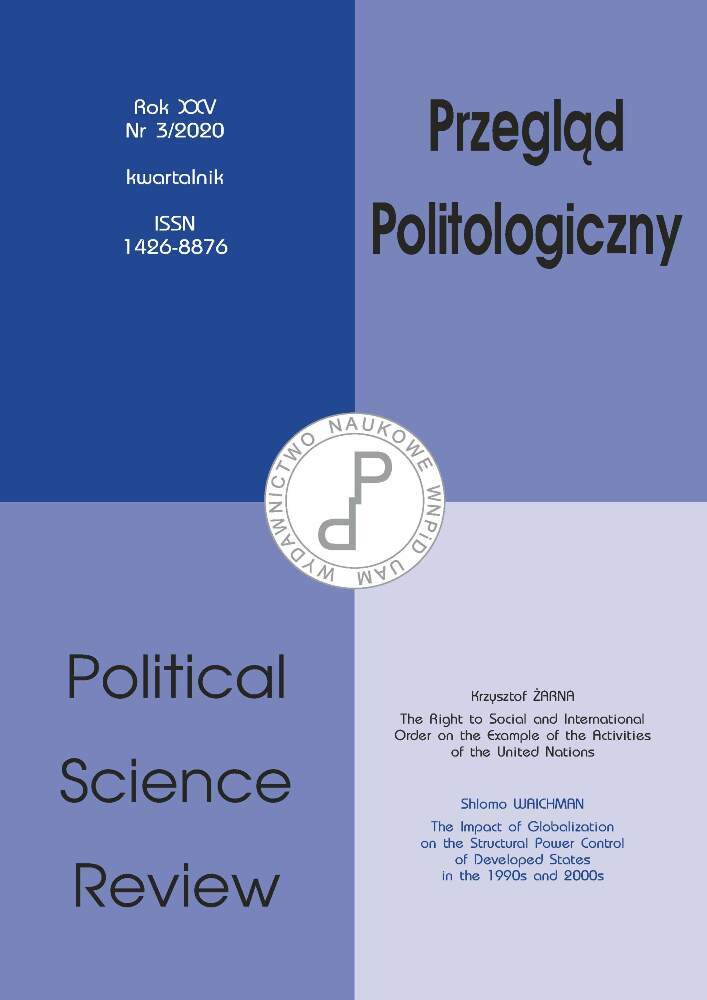Abstract
The aim of the article is to compare a NEET rate in EU-28 countries based on the most recent Eurostat statistical studies, and to solve a research problem concerning the situation of youth on the job market through answering a research question how did the NEETs situation change in the period under question which is 2008–2018. An increase of the negative trend of high unemployment among young people is constant, therefore it seems justified for the analysis to cover the period of ten years, which assumingly allows for the more complex assessment of the investigated issue. The analysis is supplemented by the case study of Netherlands which has the lowest NEET rate and as such stands as the example for the other European countries to follow.
References
Amsterdam uses gamification to fight youth unemployment, Dutch Daily News, https://dutchdailynews.com/amsterdam-uses-gamification-to-fight-youth-unemployment/, 16.04.2020.
Balcerowicz-Szkutnik M., Wąsowicz J. (2017), Pokolenie NEETs na rynku pracy – aktualne problemy, “Studia Ekonomiczne. Zeszyty Naukowe Uniwersytetu Ekonomicznego w Katowicach”, no. 312.
CBS (2018), 4% of youth not in employment, education or training, https://www.cbs.nl/en-gb/news/2018/16/4-of-youth-not-in-employment-education-or-training, 16.04.2020.
European Foundation for the Improvement of Living and Working Conditions (2012), NEETs. Young people not in employment, education or training: Characteristics, costs and policy responses in Europe, Luxembourg.
Elder S. (2015), What does NEETs mean and why is the concept so easily misinterpreted, Technical Brief no. 1, International Labour Office, January.
Eurofund (2018), Młode osoby a praca, January 2018.
European Commission (2018), Effective outreach to NEETs. Experience from the ground, Luxembourg.
European Commission (2020), Youth Guarantee country by country. Netherlands, Luxembourg.
European Commission, European policy cooperation (ET 2020 Framework), https://ec.europa.eu/education/policies/european-policy-cooperation/et2020-framework_en, access: 27.01.2020.
European Court of Auditors (2018), Audit Compendium. Youth unemployment and the integration of young people into the labour market, Contact Committee of the Supreme Audit Institutions of the European Union, April 2018.
Europejska Agencja na Rzecz Poprawy Warunków Życia i Pracy, https://www.eurofound.europa.eu.
Europejska Fundacja na rzecz Poprawy Warunków Życia i Pracy (2017), Młodzi ludzie i młodzież bierna społecznie (tzw. grupa NEET) w Europie: podstawowe ustalenia, December 2017.
Eurostat (2020), Unemployment rates by sex, age and country of birth (%), http://appsso.eurostat.ec.europa.eu/nui/submitViewTableAction.do, 16.04.2020.
Eurostat Statistical Books (2015), Sustainable development in European Union. Key messages, 2015 edition.
Fighting youth unemployment in the Netherlands, https://www.euronews.com/2013/01/25/fighting-youth-unemployment-in-the-netherlands, 16.04.2020.
Government makes €50 million extra available to fight youth unemployment, Government of the Netherlands, https://www.government.nl/topics/youth-policy/news/2013/03/07/government-makes-50-million-extra-available-to-fight-youth-unemployment, 16.04.2020.
Institute for Public Policy Research (2013), No more NEETs. A plan for all young people to be learning or earning, London.
Netherlands: Youth unemployment rate from 1999 to 2019, https://www.statista.com/statistics/812282/youth-unemployment-rate-in-netherlands/, 15.04.2020.
OECD, (2007), Jobs for youth: Korea, Paris.
OECD (2009), Jobs for youth: Japan, Paris.
OECD (2016), The NEET challenge: What can be done for jobless and disengaged youth?
Official Journal of the European Union, 2012 Joint Report of the Council and the Commission on the implementation of the Strategic Framework for European cooperation in education and training (ET 2020).
Official Journal of the European Union, Regulation (EU) No. 1304/2013 of the European Parliament and of the Council of 17 December 2013 on the European Social Fund and Repealing Council Regulation (EC) No. 1081/2006.
Pyrek R. (2012), Flexicurity – nowa koncepcja rynku pracy, “Zeszyty Naukowe Małopolskiej Wyższej Szkoły Ekonomicznej w Tarnowie”, vol. 20, no. 1.
Skórska A. (2016), Przestrzenne zróżnicowanie sytuacji młodzieży z grupy NEET na rynku pracy Unii Europejskiej, “Studia Ekonomiczne. Zeszyty Naukowe Uniwersytetu Ekonomicznego w Katowicach”, no. 289.
Tomczyk Ł., Maćkowicz J., Wyżga O., Curyło-Sikora P., Pietryga-Szkarłat B., Mróz A., Duda A. (2018), NEET – młodzi dorośli poza rynkiem pracy i systemem edukacyjnym, “Edukacja Dorosłych”, no. 1.
Van de Water P. N. (2015), 4 Reasons Why the Netherlands Isn’t a Model for Disability Insurance, https://www.cbpp.org/blog/4-reasons-why-the-netherlands-isnt-a-model-for-disability-insurance, 16.04.2020.
Youth and employment, Government of the Netherlands, https://www.government.nl/topics/youth-policy/youth-and-employment, 16.04.2020.
Youth unemployment rate in the European Union and the euro area from 2009 to 2019, https://www.statista.com/statistics/253519/youth-unemployment-rate-in-the-european-union-and-the-euro-area/, 15.04.2020.

